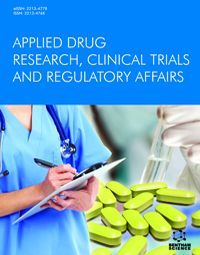
Abstract
Background: Tuberous sclerosis complex (TSC) is a rare genetic disease that affects multiple organs and affects the quality of life. Mutations in TSC1 and TSC2 genes are causing dysregulations in the mammalian target of the rapamycin (mTOR) pathway, inducing mostly benign but also malignant tumors, including renal cell carcinoma (RCC). The diagnosis of TSC, based on established clinical and genetic criteria, is essential for the optimal surveillance and management of patients.
Case Presentation: With the current report, we present the case of two sisters who were consequently diagnosed with early-stage chromophobe-like RCC, possibly familial given their young age. The younger sister also had a previous diagnosis of differentiated thyroid carcinoma, for which she had been treated properly. Genetic testing of both revealed the same heterozygous TSC2 variant that is currently regarded as a variant of unknown significance, while both patients did not fulfill the clinical criteria for the diagnosis of TSC. Owing to these data, we opted to manage and surveil both sisters as TSC patients, while we also considered the specific TSC2 variant to be pathogenic - but of low penetrance - based on clinical judgment and functional analyses. Furthermore, we discussed the implementation of mTOR inhibitors for the treatment of TSC complications.
Conclusion: As novel pathogenic variants of TSC genes are constantly being explored, the identification of TSC variants of unknown significance in combination with absent clinical diagnostic criteria cannot exclude a TSC diagnosis. We support the implementation of clinical judgment in assisting the diagnosis of TSC, as well as the enrollment of patients in clinical trials due to the rarity of the disease.
Graphical Abstract
[http://dx.doi.org/10.1186/s13023-021-01917-y] [PMID: 34229737]
[http://dx.doi.org/10.1038/gim.2014.147] [PMID: 25394175]
[http://dx.doi.org/10.1016/j.pediatrneurol.2021.07.011] [PMID: 34399110]
[http://dx.doi.org/10.3389/fgene.2020.575750]
[http://dx.doi.org/10.1007/s00381-020-04726-z] [PMID: 32761379]
[http://dx.doi.org/10.1007/s00467-020-04775-1] [PMID: 33006051]
[http://dx.doi.org/10.3390/jcm8060788] [PMID: 31163675]
[http://dx.doi.org/10.1146/annurev-genom-083118-015354] [PMID: 31018109]
[http://dx.doi.org/10.1016/j.ejpn.2021.10.003] [PMID: 34673401]
[http://dx.doi.org/10.1016/j.ejmg.2018.02.005] [PMID: 29432982]
[http://dx.doi.org/10.1097/MD.0000000000010112] [PMID: 29642139]
[http://dx.doi.org/10.1016/j.ejpn.2018.08.005] [PMID: 30279084]
[http://dx.doi.org/10.1038/gim.2013.60] [PMID: 23660529]
[http://dx.doi.org/10.1016/S0140-6736(21)00682-6] [PMID: 33915094]
[http://dx.doi.org/10.1177/2051415820956434]
[http://dx.doi.org/10.1097/PAS.0000000000000248] [PMID: 25093518]
[http://dx.doi.org/10.1016/S0022-5347(05)64608-3] [PMID: 12187252]
[http://dx.doi.org/10.3390/ijms22041743] [PMID: 33572326]
[http://dx.doi.org/10.1093/ndt/gfv249] [PMID: 26156073]
[http://dx.doi.org/10.1111/epi.17099] [PMID: 34693520]
[http://dx.doi.org/10.1212/WNL.0000000000007749] [PMID: 31217257]
[http://dx.doi.org/10.1158/1078-0432.CCR-20-4548] [PMID: 33727259]
[http://dx.doi.org/10.21037/jtd-21-195] [PMID: 34422335]
[http://dx.doi.org/10.1056/NEJMoa066838] [PMID: 17538086]
[http://dx.doi.org/10.1158/1078-0432.CCR-15-2631] [PMID: 26831717]
[http://dx.doi.org/10.1186/1752-1947-8-95] [PMID: 24612911]
[http://dx.doi.org/10.1101/mcs.a002220] [PMID: 29610387]
[http://dx.doi.org/10.1158/1078-0432.CCR-18-1833] [PMID: 30327302]
[http://dx.doi.org/10.1016/j.eururo.2021.03.015] [PMID: 33867192]
[http://dx.doi.org/10.3390/ijtm2040042]
[http://dx.doi.org/10.1007/s11912-022-01269-1] [PMID: 35438388]
[http://dx.doi.org/10.1371/journal.pone.0158476] [PMID: 27351628]
[http://dx.doi.org/10.1200/JCO.21.01728] [PMID: 34637337]
[http://dx.doi.org/10.1038/s41576-020-0255-7] [PMID: 32488197]
[http://dx.doi.org/10.1002/pro.2647] [PMID: 25808204]
[http://dx.doi.org/10.1186/s13073-021-00835-9] [PMID: 33618777]
[http://dx.doi.org/10.1038/s41431-021-00959-x] [PMID: 34521998]
[http://dx.doi.org/10.1002/humu.21451] [PMID: 21309039]
[http://dx.doi.org/10.1093/nar/gky1015] [PMID: 30371878]
[http://dx.doi.org/10.1038/s41598-020-66588-4] [PMID: 32555378]
[http://dx.doi.org/10.1093/jlb/lsx038] [PMID: 29868193]
[http://dx.doi.org/10.18632/oncotarget.26501] [PMID: 30728895]
[http://dx.doi.org/10.1016/j.ucl.2012.01.006] [PMID: 22487757]
[http://dx.doi.org/10.1056/NEJMoa2106391] [PMID: 34407342]
[http://dx.doi.org/10.1016/j.eururo.2017.09.008] [PMID: 28967554]
[http://dx.doi.org/10.1200/JCO.2022.40.17_suppl.LBA4500]









